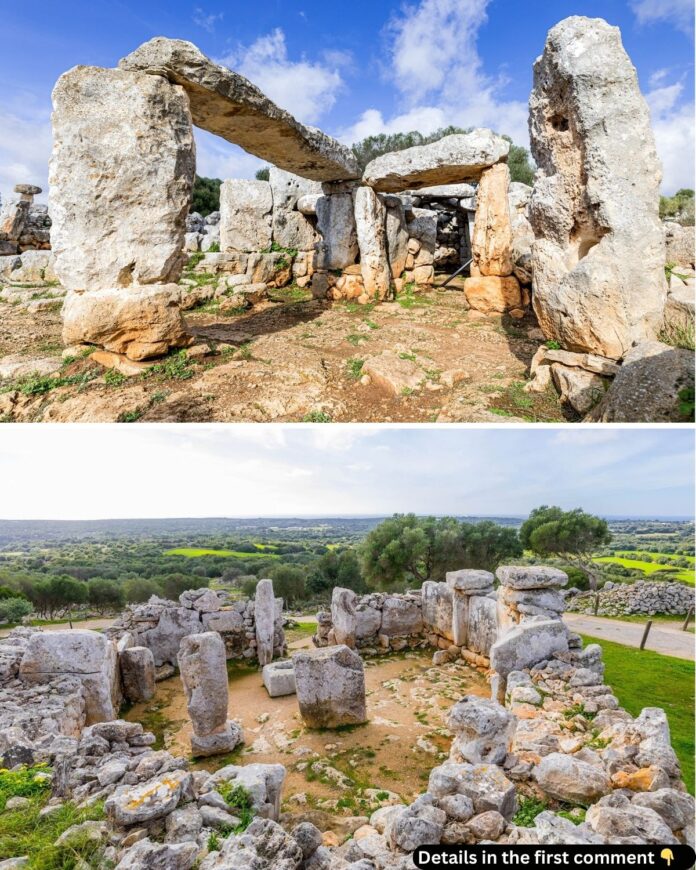Nestled on a hill with breathtaking views of Minorca’s southern coast lies Torre d’en Galmés, the largest and most significant Talayotic settlement on the island. This ancient site, which dates back to the Iron Age, offers a unique glimpse into the lives of Minorca’s early inhabitants. Its megalithic monuments and sophisticated structures not only reflect the ingenuity of the Talayotic people but also highlight the rich cultural exchanges that shaped this remarkable settlement. A visit to Torre d’en Galmés is a journey through time, revealing the fascinating layers of history that have shaped Minorca’s identity.
The Origins of Torre d’en Galmés
Torre d’en Galmés emerged during the Iron Age, around 1700–1400 BC, and its strategic location on a hill made it a central hub of activity. The settlement’s elevated position provided panoramic views of Minorca’s southern coastline, making it both a defensive stronghold and a cultural nexus. Its size and prominence suggest that it held significant importance within the Talayotic period, serving as a vital center for trade, governance, and religious activities.
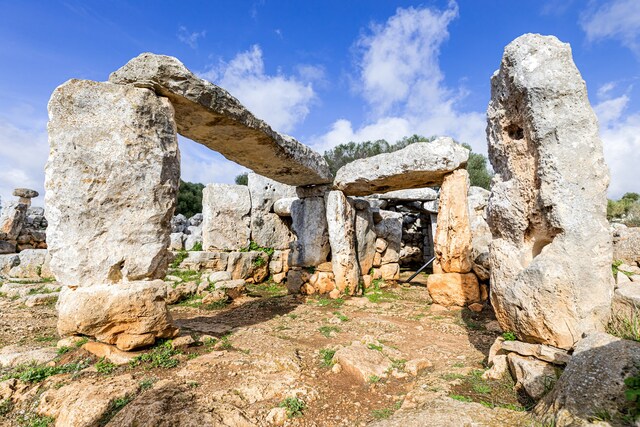
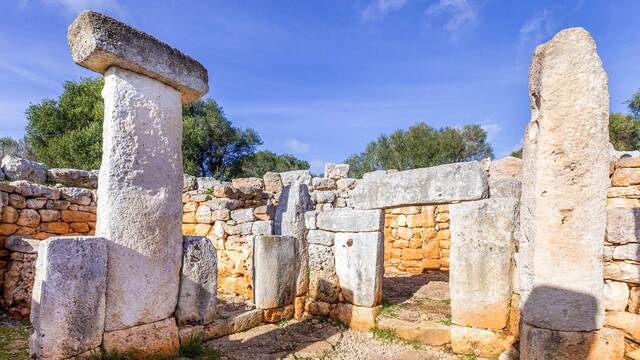
The site’s strategic importance also made it a beacon for subsequent civilizations. Over the centuries, it was settled peacefully by the Phoenicians and Phocians before being aggressively colonized by the Carthaginians. These layers of occupation have left an indelible mark on the settlement, making it a treasure trove of archaeological significance.
Video
Explore the megalithic site of Menorca and its fascinating connection to Egypt’s Imhotep – watch the video to uncover the mysteries of Torre d’en Galmés and its ancient ties!
Layers of History: Cultural Influences Through Time
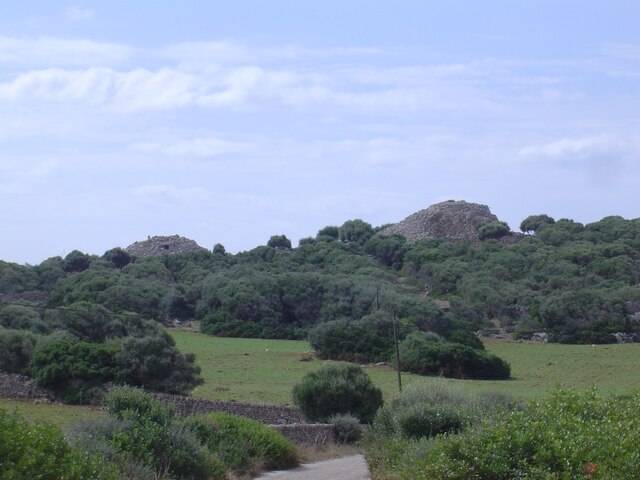
Torre d’en Galmés bears witness to a long history of cultural exchanges and occupations. During the Carthaginian era, the settlement saw the construction of many of the structures visible today. Excavations in 1974 unearthed a bronze figurine of the Egyptian priest Imhotep, a testament to the extensive trade networks and cultural influences of the time.
In the second century BC, the Roman Republic seized control of the Balearic Islands, bringing Torre d’en Galmés to its peak population of around 900 residents. The Roman influence is evident in the modifications made to the site, including the adaptation of homes and public spaces. The Middle Ages brought brief occupations by the Vandals and Moors, followed by the Christian reconquest in 1287. However, after this period, the settlement was abandoned, marking the end of its active use.
Architectural Wonders of Torre d’en Galmés
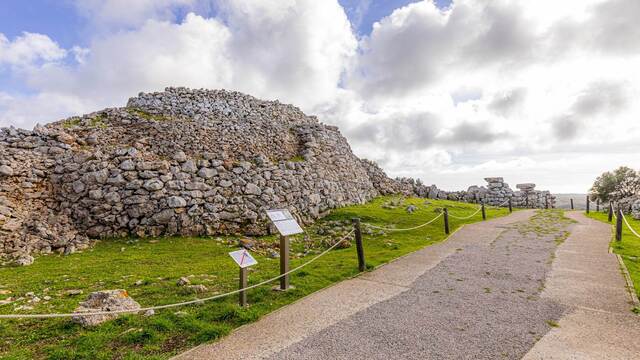
The settlement’s architecture is a testament to the ingenuity of its ancient inhabitants. Upon entering the site, visitors are greeted by three massive talayots—Cyclopean-style watchtowers constructed from large, mortarless stones. These towers not only provided a strategic vantage point but also symbolize the architectural prowess of the Talayotic people.
Another striking feature is the taula, a T-shaped stone monument believed to have held religious significance. This horseshoe-shaped enclosure served as a place of worship, reflecting the spiritual beliefs of the Talayotic culture. Nearby, the settlement boasts 27 circular homes, including the well-preserved Cartailhac Circle. This house offers a glimpse into daily life, featuring a courtyard, hearth, and interconnected rooms that reveal the advanced planning of the Talayotic builders.
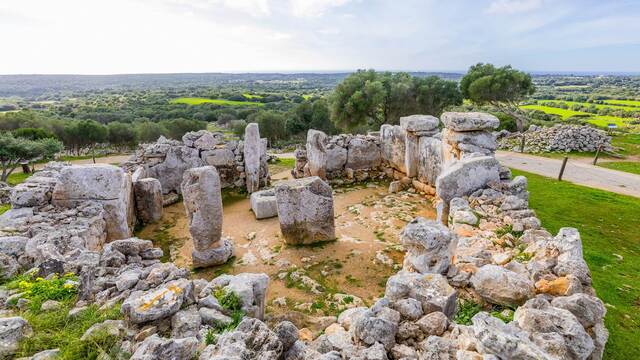
On the southern side of the hill, the Hypostyle Room stands as a unique example of Talayotic ingenuity. With its columned design and sturdy construction, this room likely served as a storeroom or stable, showcasing the community’s resourcefulness in managing their resources.
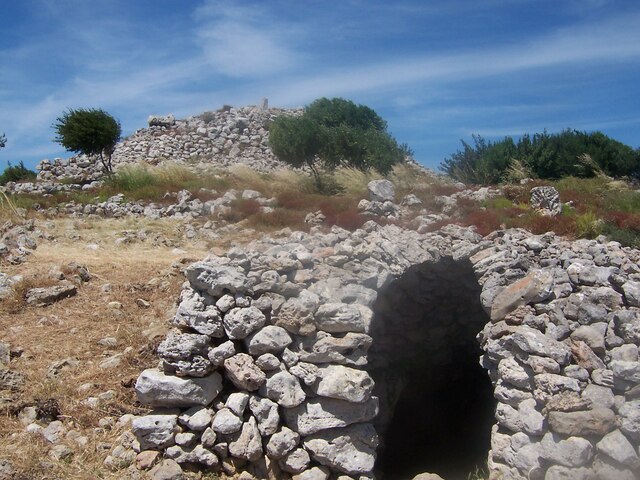
Ingenious Water Management Systems
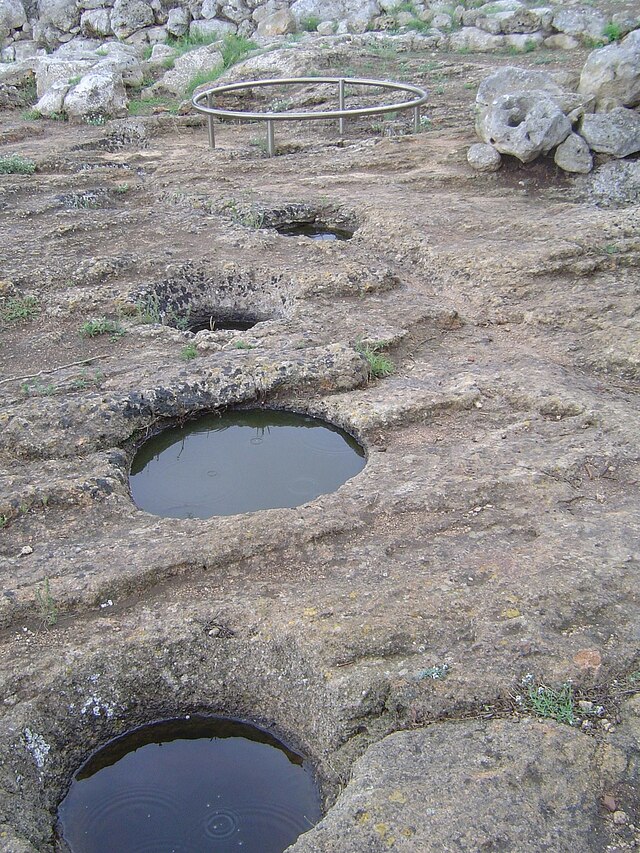
One of Torre d’en Galmés’ most remarkable features is its sophisticated water collection and conservation system. Rainwater was channeled into underground cisterns through a network of carved channels, ensuring a steady water supply for the settlement. This advanced engineering highlights the Talayotic people’s ability to adapt to their environment and sustain a thriving community.
The use of pre-Talayotic chamber tombs as water storage facilities further underscores the ingenuity of the settlement’s inhabitants. These systems not only provided practical solutions for water management but also reflect the deep connection between the Talayotic people and their environment.
Exploring Torre d’en Galmés Today
Visitors to Torre d’en Galmés can experience the site’s rich history firsthand through a self-guided tour. The settlement’s interpretation center offers insights into the archaeological findings and cultural significance of the site, making it an educational and immersive experience.
The site’s highlights include the towering talayots, the ceremonial taula enclosure, and the Cartailhac Circle, which provides a vivid depiction of life in a Talayotic household. The well-preserved Hypostyle Room and the intricate water management systems are also must-see features that showcase the ingenuity of the ancient builders.
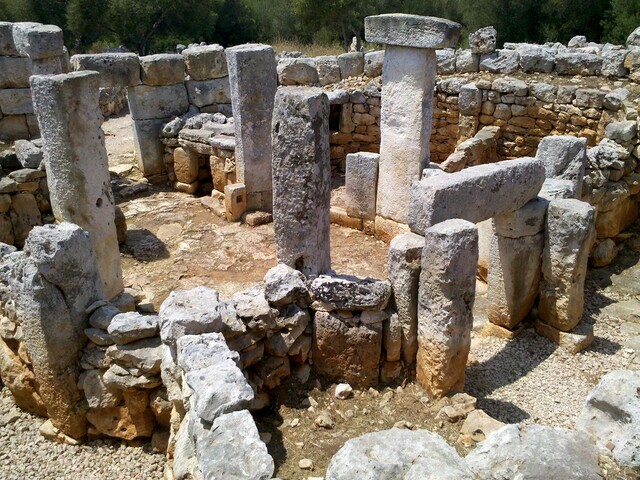
For those seeking a moment of relaxation, the site offers picnic tables where visitors can take in the stunning views of Minorca’s coastline while reflecting on the history of this remarkable settlement.
The Importance of Torre d’en Galmés Today
Torre d’en Galmés is more than just an archaeological site—it is a window into Minorca’s past and a symbol of its cultural heritage. The settlement’s candidacy for UNESCO World Heritage status underscores its global significance and the need for its preservation. As one of the most important Talayotic sites in the Balearic Islands, it offers invaluable insights into the lives of Minorca’s early inhabitants and their contributions to the island’s history.
By exploring Torre d’en Galmés, visitors not only connect with the past but also contribute to the ongoing efforts to preserve and celebrate this unique cultural treasure.
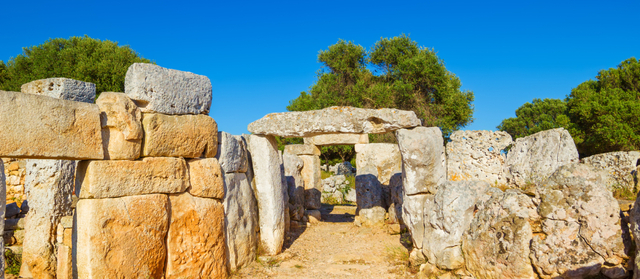
Conclusion
Torre d’en Galmés stands as a testament to the ingenuity, resilience, and cultural richness of Minorca’s ancient inhabitants. From its strategic hilltop location and architectural marvels to its advanced water management systems, the settlement offers a fascinating glimpse into a bygone era. As a living monument to the Talayotic culture, Torre d’en Galmés invites us to journey through time and uncover the stories of Minorca’s prehistoric past. A visit to this remarkable site is not just an exploration of history—it is an invitation to celebrate the enduring legacy of the Talayotic people.
